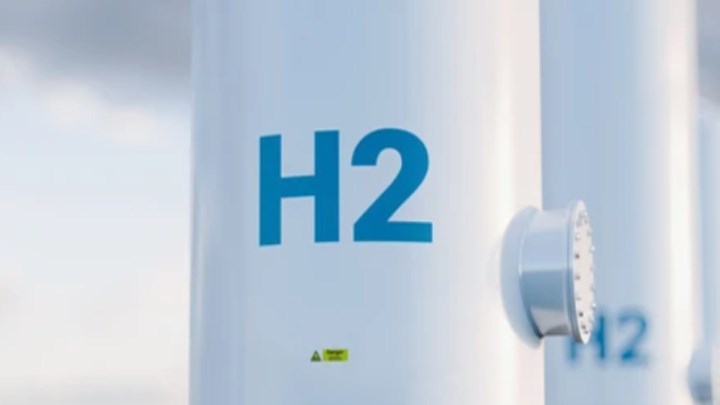France and Sweden both launch ‘first of a kind’ hydrogen facilities

FRANCE has launched an offshore green hydrogen production platform at the country’s Port of Saint-Nazaire this week, along with its first offshore wind farm. The hydrogen plant, which its operators say is the world’s first facility of its type, coincides with the launch of another “first of its kind” facility in Sweden dedicated to storing hydrogen in an underground lined rock cavern (LRC).
Owned and developed by Eolien Maritime France (EMF), a consortium of EDF Renouvelables, Enbridge, and Canada Pension Plan Investment Board, France’s Saint-Nazaire wind farm project is located between 12 and 20 km off the coast of the Guérande peninsula.
The offshore wind farm was officially inaugurated by French President Emmanuel Macron on 22 September, and features three-bladed wind turbines with a 150 m diameter rotor and a rated power of 6 MW.
France is also working on the construction of two more commercial-scale offshore wind farms; one in the Bay of Saint-Brieuc in the English Channel, the other off the coast of Normandy.
Along with the wind farm, the Port of Saint-Nazaire is also supporting an offshore hydrogen production platform developed by Lhyfe.
The electrolyser is being installed on GEPS Techno’s hybrid floating renewable energy platform, which combines solar, wind and wave energy, where it will undergo an 18-month experimental period; first in in Saint-Nazaire, then at the multi-technology offshore testing site at SEM-REV.
Now that the platform, dubbed Sealhyfe, has been deployed it is the first time in the world that renewable hydrogen will be produced at sea, said Lhyfe.
Meanwhile up in Sweden, a trio comprising of state-owned power company Vattenfall, steel company SSAB, and iron ore producer LKAB has opened the HYBRIT pilot facility.
HYBRIT is an underground LRC that has been lined with a sealing layer so that it can repeatedly fill and empty around 100 m3 of pressurised hydrogen for use as energy.
Its mechanical stability, tightness and pressure capacity were initially tested by filling it with water. Since then, HYBRIT has since reached the maximum operating pressure of 250 bar, the partners said.
Its developers also noted that at a later stage, HYBRIT’s capacity might be extended so that 100,000–120,000 m3 of pressurised hydrogen gas can be stored. This would allow up to 100 GWh of electricity to be stored in the form of hydrogen gas, “enough to supply a full-size sponge iron factory for about three to four days”, they said. Sponge iron is used in the iron and steel industry as a substitute for scrap in induction and electrical arc furnaces.
“The fact that this technology is now working is great news and is an important milestone in the development of a fossil-free value chain for ore-based iron and steel production. The use of large-scale hydrogen storage means that the industry will have a more robust and plannable supply of hydrogen from fossil-free electricity, even when the electricity system becomes more dependent on the weather, said Mikael Nordlander, director of Industry Decarbonisation at Vattenfall.
Currently in a two-year test period until 2024, the HYBRIT technology is then expected be used for the production of fossil-free sponge iron on a large scale at a demonstration facility in Gällivare, a mining town about 100 km north of the Arctic Circle.
Recent Editions
Catch up on the latest news, views and jobs from The Chemical Engineer. Below are the four latest issues. View a wider selection of the archive from within the Magazine section of this site.




